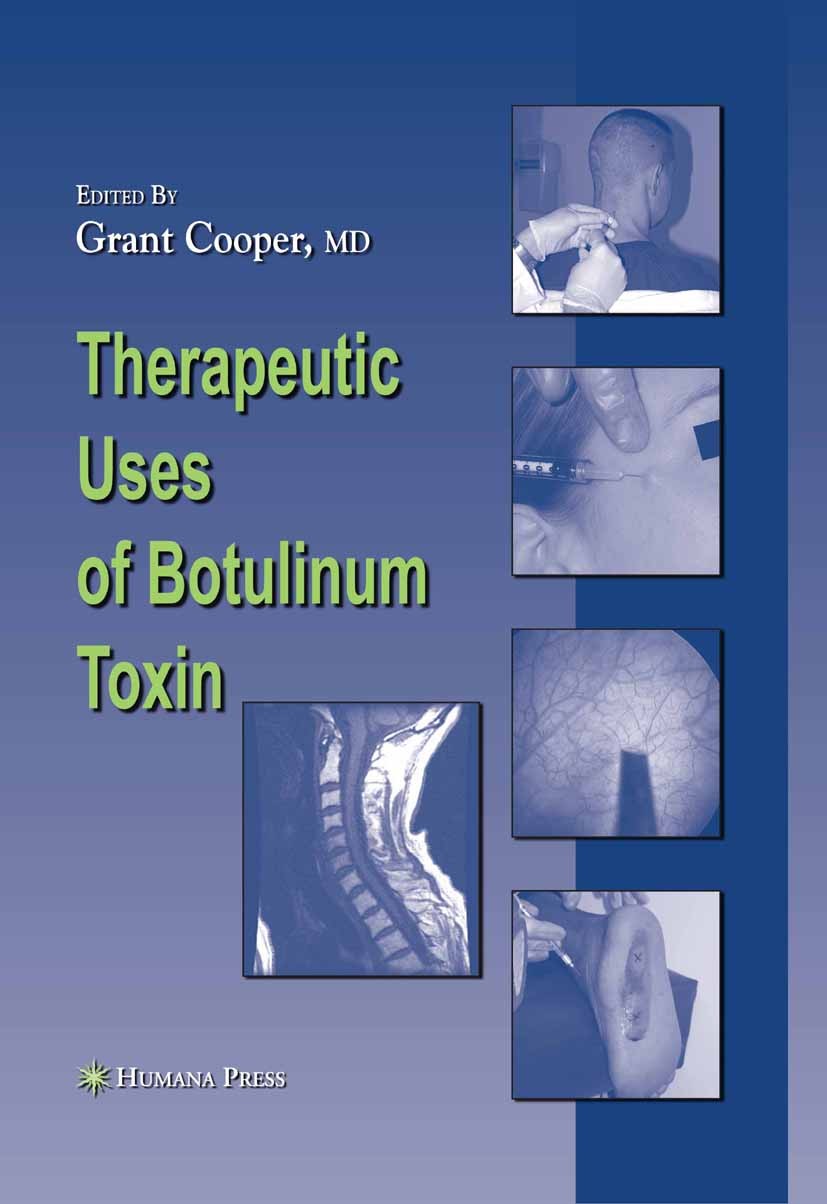| 书目名称 | Therapeutic Uses of Botulinum Toxin |
| 编辑 | Grant Cooper |
| 视频video | http://file.papertrans.cn/925/924143/924143.mp4 |
| 概述 | Defines our current understanding of botulinum toxin and its method of action.Presents therapeutic uses across a variety of medical subspecialties and patient populations.Encourages responsible resear |
| 丛书名称 | Musculoskeletal Medicine |
| 图书封面 |  |
| 描述 | Justinius Kerner, a German medical officer and poet, was the first to realize that botulinum toxin potentially might be useful for therapeutic purposes. Kerner made this observation in 1822, but he did not call the toxin “botulinum toxin. ” Instead, Kerner called it the substance in “wirkenden stoffes,” which translates to “bad sausages. ” Kerner realized that there was a “fat poison” or “fatty acid” within sausages that produced the toxic effects that we now know as botulism. Nearly a century would pass before the bacterium producing the toxin would be isolated and the toxin ultimately renamed “botulinum toxin. ” As farsighted as Kerner was, it is doubtful that even he could have predicted just how much potential therapeutic punch was packed within his wirkenden stoffes. It was not until 1978, more than a century and a half after Kerner’s prediction, that Dr. Allan Scott received Food and Drug Administration approval to test botulinum toxin type A in human volunteers. We do not yet have a comprehensive understanding of precisely how botulinum toxin works in the human body or how our bodies fully respond to the toxin. We do know that it temporarily paralyzes muscle by inhibiting th |
| 出版日期 | Book 2007 |
| 关键词 | Hyperhidrosis; drug; neurotransmitter; research; rehabilitation psychology |
| 版次 | 1 |
| doi | https://doi.org/10.1007/978-1-59745-247-2 |
| isbn_softcover | 978-1-61737-842-3 |
| isbn_ebook | 978-1-59745-247-2Series ISSN 2626-8663 Series E-ISSN 2626-8671 |
| issn_series | 2626-8663 |
| copyright | Humana Press 2007 |
 |Archiver|手机版|小黑屋|
派博传思国际
( 京公网安备110108008328)
GMT+8, 2025-11-17 03:45
|Archiver|手机版|小黑屋|
派博传思国际
( 京公网安备110108008328)
GMT+8, 2025-11-17 03:45


